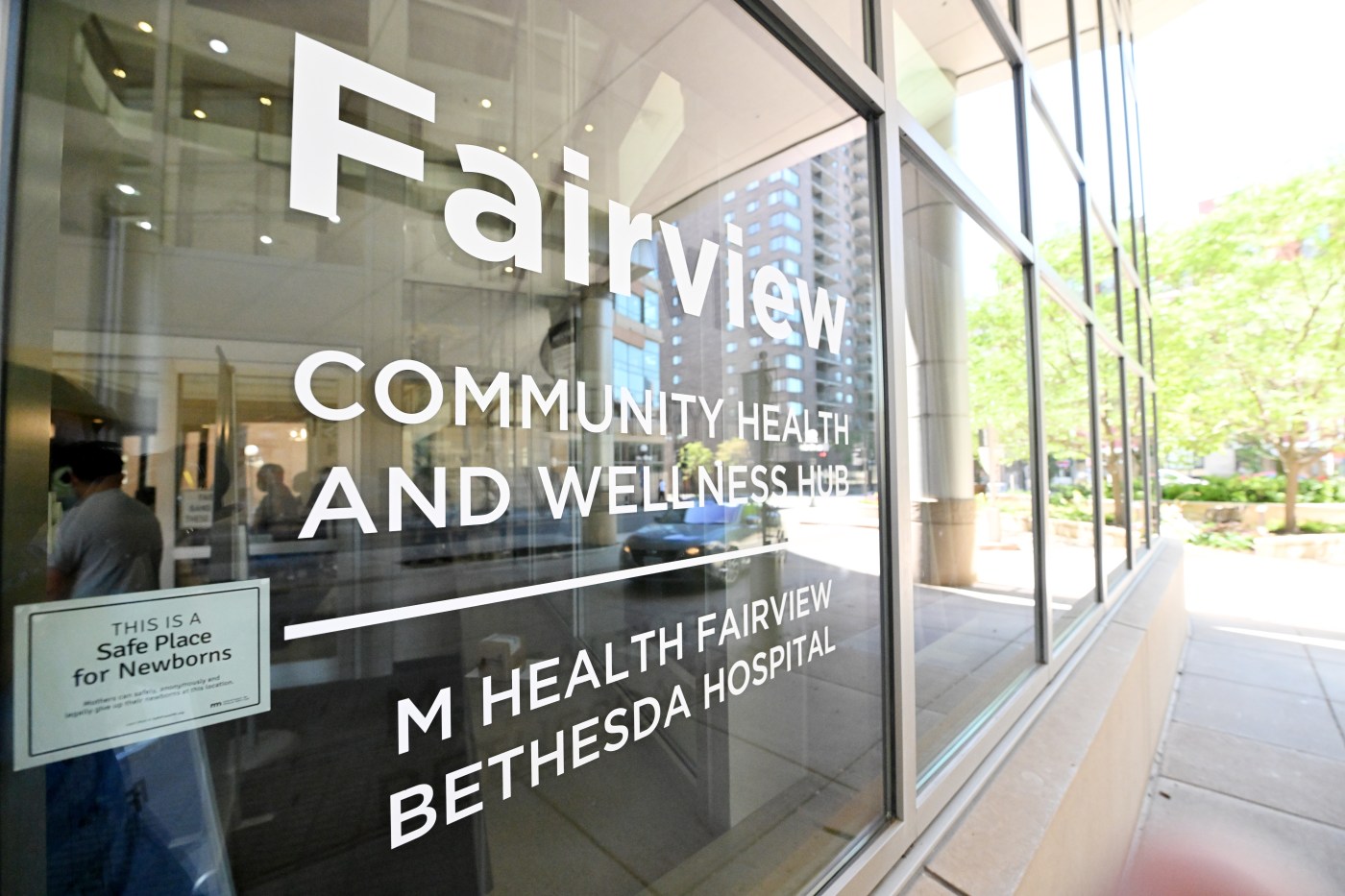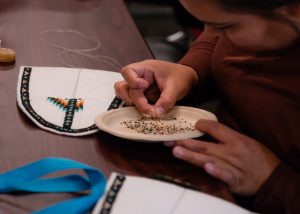
From downtown St. Paul, Fairview Frontiers emerges as national leader in testing wearable medical devices
A few years ago, not long after the advent of the Apple Watch and competing fitness trackers that count steps and heartbeats, a private research firm contacted the HealthEast health system in a panic.
A technology company had commissioned the agency to enroll 50 cardiac arrhythmia patients for a clinical study involving a wearable health-monitoring device, but time was running out and they’d come up short. Fairview research director Andrew Snyder recalled the conversation with a slightly exasperated physician: “What, you need them by tomorrow?”
It was at that moment in 2018, arguably, that a new revenue branch opened for M Heath Fairview, one of Minnesota’s largest health care systems, which acquired HealthEast the following year.
“We did 150 patients in six weeks,” said Snyder, proudly. “We did three times what they asked us to do. … It wasn’t hard to find people.”
‘Wearables’
What began as a bit of a side-note distraction for Fairview researchers has evolved in a few short years into Fairview Frontiers, believed to be the largest testing facility in the nation dedicated exclusively to clinical trials for non-invasive, wearable health-monitoring devices, an exploding field for private tech companies.
Undated courtesy photo, circa January 2024, of Andrew Snyder, who directs clinical trials for Fairview Frontiers, an office established within Fairview Health System to oversee the testing of new wearable health monitoring devices using paid volunteers. Fairview Frontiers, which moved into the Fairview Community Health and Wellness Hub at the former St. Joseph’s Hospital building in downtown St. Paul in the summer of 2022, enrolled nearly 1,000 volunteers for six studies in 2023, ranging from diabetes to sleep apnea. The unit more than doubled enrollment from communities of color in 2023, from 15% to 34% of enrollees, in response to technology companies wanting greater assurance their devices work effectively across all skin colors. (Courtesy of Fairview Health System)
Based since the summer of 2022 at the Fairview Community Health and Wellness Hub in downtown St. Paul — formerly St. Joseph’s Hospital — the research unit enrolled almost 1,000 paid volunteers last year across six studies involving “wearables.” Volunteers were recruited from within the health system, which hosted some 2 million patient visits last year.
Recent studies have tried to determine how well different devices track irregular heartbeats, blood pressure or indications of sleep apnea, chronic obstructive pulmonary disease (COPD), hearing loss, diabetes and influenza.
“There’s all different kinds of wearable devices,” Snyder said. “We are testing whether non-invasive wearable devices can accurately measure human biometrics, and whether their software algorithms can interpret this data to help patients make health care decisions.”
Fairview Frontiers paid out $1.3 million in stipends last year to clinical trial volunteers, ranging from $150 to $4,000 for more-involved studies that require enrollees to wear devices overnight. Fairview researchers are bidding on even more ambitious projects that would require in-house monitoring overnight for two nights in downtown St. Paul.
Less expensive for patients
In addition to stipends, patients benefit by receiving two types of health monitoring at no cost. Every study includes an investigational wearable device, whose results are compared to what Snyder described as a “positive gold-standard control,” or traditional hospital-grade monitoring.
The study scientists then compare the new device with the positive control to determine whether the investigational device is working properly. For example, watches that intend to detect atrial fibrillation are tested by simultaneously wearing EKG equipment.
A recent clinical trial involving sleep apnea drew many patients who clearly needed to be tested but had trouble paying for hardware.
“So many of them, their doctors had already ordered them a sleep test, but they couldn’t afford it,” Snyder said. “(Even with private insurance) their out-of-pocket cost was really expensive.”
Perricia Burgess, 79, of Bloomington, participated in a two-week study in 2022 that used a smart watch to track her vital signs and compare the results to a monitor on her other arm.
“It was very timely,” said Burgess, who suffers from COPD and relies on inhalers and other treatments. “It made me feel comfortable that everything was going right.”
A booming industry
Smart watches and other wearable devices that monitor health indicators aren’t just another passing fitness craze or a question of vanity. The nation’s senior population is booming, creating more demand for home health care and remote patient monitoring at a time when hospitals and health care systems are looking to cut costs. The COVID-19 pandemic surged consumer interest, and not just in fitness trackers.
Grand View Research found that the “wearables” industry was valued at around $9 billion in 2020, the beginning of the pandemic, and $27 billion in 2022, with forecasted breakneck growth placing it at $197 billion by 2030.
The industry has continued to evolve, especially when it comes to testing devices on people of color. In 2023, Fairview Frontiers more than doubled the numbers of non-white patients who participated in its studies from 15% to 34%, and not by accident.
“The FDA is starting to recognize that wearable devices don’t always work the same with everyone based upon the color of their skin,” said Snyder, who is scheduled to attend a Feb. 2 FDA symposium on the topic as it relates to pulse oximeters.
Experts have found that FDA-approved pulse oximeters — blood-oxygen readers that became an especially popular purchase during the COVID-19 pandemic — work differently on white people than people with darker skin, leading to bad read-outs and potentially insufficient medical care.
The challenge is that technology that relies on LEDs to project light onto the skin and photodetectors to record the amount of light reflected can have a tough time with melanin, which alters skin light absorption. In other words, if the tech was developed using a homogenous white population, it may not be one-size-fits-all for the general population.
“There’s some real concern that pulse oximeters are not providing accurate readings to people of color,” Snyder said. “It’s a real issue.”
A question of race and skin tone
Manufacturers of other wearable medical devices have taken notice, as has the greater scientific community. In 2022, medical researchers at the University of Toronto reviewed 10 studies related to the accuracy of heart-rate measurements based on skin tone.
Overall, four of the studies reported a significant reduction in accuracy with wrist-worn wearables in darker-skinned individuals, compared to participants with lighter skin tones. Four studies noted no effect of user skin tone on accuracy. And the remaining two studies showed mixed results.
The research, published in the Journal of Racial and Ethnic Health Disparities, said that “early evidence of racial bias in wrist-worn wearables is mixed,” but the findings were still enough to garner the attention of the American College of Cardiology.
Snyder said that all of the Fairview Frontiers studies on the horizon now require a certain level of testing geared specifically to people of color.
“That’s new,” he said. “We’ve never seen that before. Technology companies have gotten the wake-up call.”
That growing focus is good news to some clinical trial volunteers like Burgess, who is Black.
“I am so happy about that,” said Burgess, who previously volunteered on a COPD study with the National Institutes of Health. “It’s helping not only the company but the people of color learn about the situations and the illnesses that they have, and gives them hope that there’s an opportunity to be helped. It’s not painful. It’s life-changing. It benefits me and it benefits others.”
Related Articles
Vote for the canine king and queen of the 2024 St. Paul Winter Carnival in the Doggie Depot contest
What if you apply AI to music? St. Paul Chamber Orchestra and composer collaborate to find out
St. Paul police release 911 transcript, body cam video of shooting after assault call
Summit Avenue bikeway opponents continue fight before Minnesota Court of Appeals
St. Paul schools enrollment drop appears to level, according to district officials


